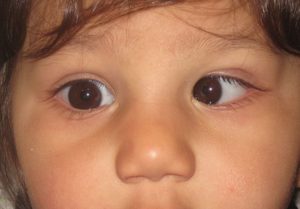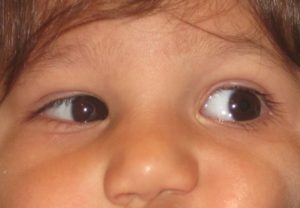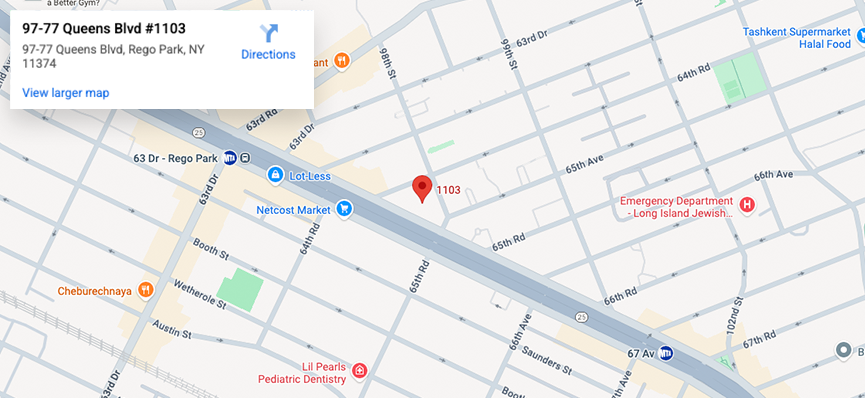Duane syndrome is a constellation of eye findings present at birth that results from abnormal connections among the nerves that supply the muscles of the eyes.
DUANE SYNDROME
Duane syndrome is a constellation of eye findings present at birth that results from abnormal connections among the nerves that supply the muscles of the eyes.
Duane syndrome occurs most commonly though not exclusively, in the left eye of females, who are typically otherwise healthy. Duane syndrome has several variants that present with various eye movement abnormalities. In the most common type, the eye is not able to move outwards from the normal straight ahead position. When the involved eye moves in the opposite direction towards the nose, the eye is pulled slightly back into the eye socket causing a narrowing of the opening of the eyelids. The eye may also drift up or down as it moves toward the nose. In addition, with the eyes looking straight ahead, they may be crossed in relation to each other. This may lead to a person with Duane syndrome to turn their head toward one side while viewing objects in front of them in order to better align their eyes.
Although restoration of full eye movements in patients with Duane syndrome may not be possible with eye muscle surgery, surgery can be beneficial for several indications. Surgical treatment can be effective for correcting any misalignment of the eyes which is present while looking in the straight ahead position, as well as eliminating any abnormal head positioning. If the abnormal up and down movements of the eye or the narrowness of the eyelid opening significantly affect the eye’s appearance, surgery may also be of benefit.

Child’s right eye unable to move towards her right beyond midline.

Narrowing of right eye opening when child gazes towards her left.
Pediatric Ophthalmic Consultants
40 West 72nd Street, New York, NY 10023 | 212-981-9800
The content of this Web site is for informational purposes only. If you suspect that you or your child has any ocular problem,
please consult your pediatrician, family practitioner, or ophthalmologist to decide if a referral to a pediatric ophthalmologist is required.





